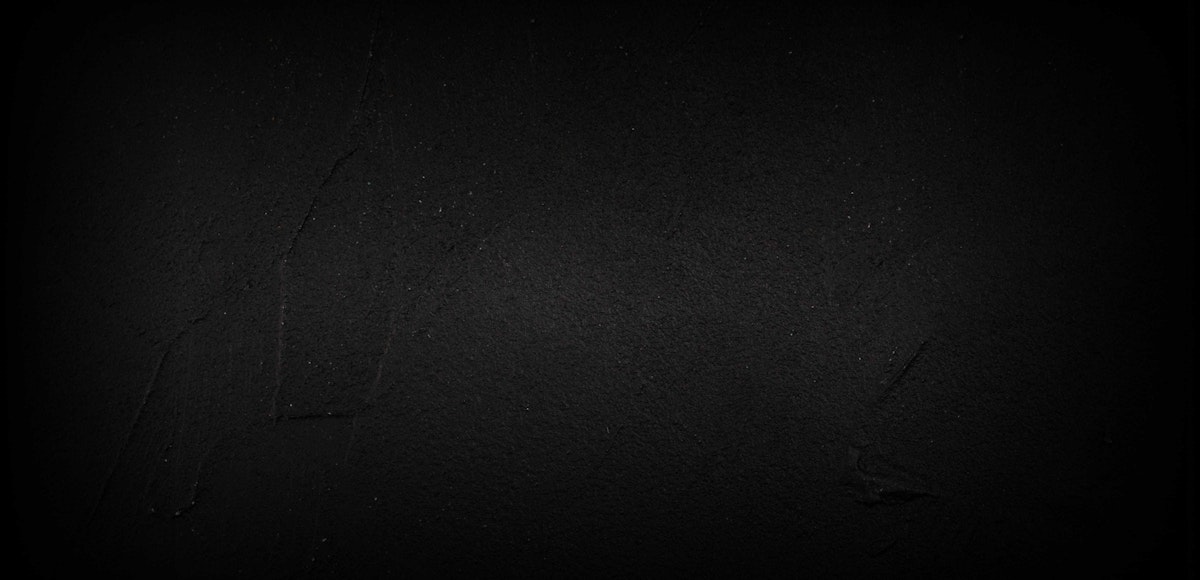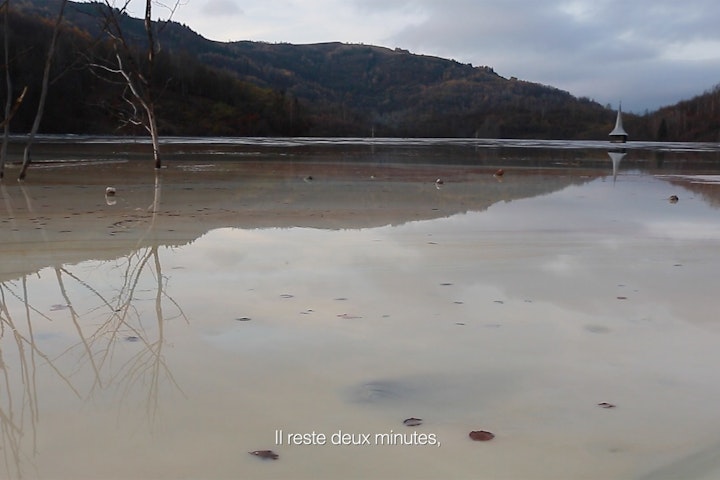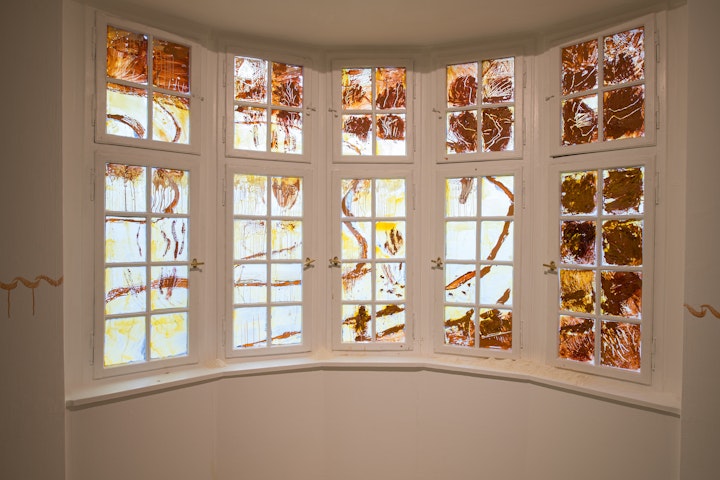
LEAP22 Stefania Crişan
Stefania, you started by expressing yourself through painting. Why did you feel the need to switch to other art forms after seeing the lake in Geamăna?
Before going to Geamăna, I only painted, apart from some installations about the death of painting. But when I saw this landscape, this ecological disaster, I had to film it – even though there were signs saying it was forbidden to do so. The images I came home with were haunting, I thought about them all the time.
Then one day, out of the blue, I started to sing, which was very unlike me. I remembered a song from my childhood, and especially one line: “Luminează-mi calea, dătătorule de lumina” (Illuminate my path, you, the giver of light). Actually, I remembered it wrong, because it’s not ‘path’, but ‘garment’; however, my memories made this connection with the landscape that made sense. I kept on singing and wrote a new song, and at the end of the day I could visualise a performance, with soil, the shape of the lake, pigments, and calcium carbonate (used to neutralise the acidity of the lake). That’s how Reverse the entropy was born, a creation I’ve been able to show in 5 countries, and the first chapter of a larger work.
The Geamăna lake seems incredibly beautiful. It must have been a very intense experience!
I was shaking while I filmed! But I also kept asking myself: How can you find this beautiful? I was filled with guilt and feelings of being responsible. It’s close to a romantic notion of the sublime. But I didn’t want to present the video from a purely aesthetic point of view. That is why I added subtitles and a subjective approach, so the story of the lake becomes central. The intense emotion is meant as a call for action, it is not intended to aesthetize the disaster. (below: The Lost World, photo © Oliver Dietze)
At LEAP you will show another work emanating from this experience.
Yes indeed, I will exhibit the Geamăna project with a focus on its third chapter, The Lost World. It is inspired by my third visit to the lake during which I saw dead bees on the flowers. The whole performance is a tribute to bees, with two voices repeating the mantras “Albina‑i pământ, pământu‑i albină” (Bee is Earth, Earth is bee) and “Catastrofa ne aduce aminte de inima noastră” (The catastrophe reminds us of our heart).
The installation features a space which could be the interior of the church submerged in the lake at Geamăna. The stained-glass window through which the disaster emerges, is painted with wax and clay – the clay representing for me a connection with the Earth. There is a time-lapse video of the heating and melting of the wax in a receptacle I made for the second chapter, Ophelia and the Anthropocene. The video is projected onto a drum – which I see as something ancestral, related to many different cultures – that hangs by a rope seemingly reaching up towards the sky. I paint another rope, with clay, on the walls, which connects us to the Earth and is reminiscent of the sculpted ropes found in Transylvanian churches. And then there is also an autobiographical element, the flour sieve, a memory of my grandmother making bread and a metaphor for the creation of a new world. (below: The Lost World, photo © Oliver Dietze)
Ultimately, the project and its three chapters stem from a single landscape, and the intense encounters with it. What has this meant for the development of your art practice?
I know now that I must remain authentic and that I can trust my intuition – even if it means singing in front of 50 people to somehow get their ‘endorsement’ and finally overcoming my fear of singing in public!
These pieces were created through emotions. Every time I’ve performed Reverse the entropy, I’ve found that the song opens the hearts of those who come, humans and animals alike. It’s almost a cathartic moment. It is much easier to talk about the lake, ecology, ethics, and politics once you have opened up to emotions. It’s another form of activism, a more poetic one.
In which ways are competitions like LEAP necessary steps for an artist?
To be honest, creating a portfolio and entering competitions are my least favourite parts of the job. How do I summarise my work in 10 pages? How do I explain my performances with a few photos when even the echo of the piece is important and much of my work is intuitive?
I was convinced that I didn’t have enough experience to send in an application for LEAP. Luckily, an artist friend convinced me to try. I want my work to be seen, I want the opportunity to talk about it. I’m not represented by a gallery; up until recently I’ve been a bit wary of galleries and I’m still not sure how the art world works. An award like LEAP is a chance to connect with different cultural bodies, show my work, and hopefully touch people through it.






